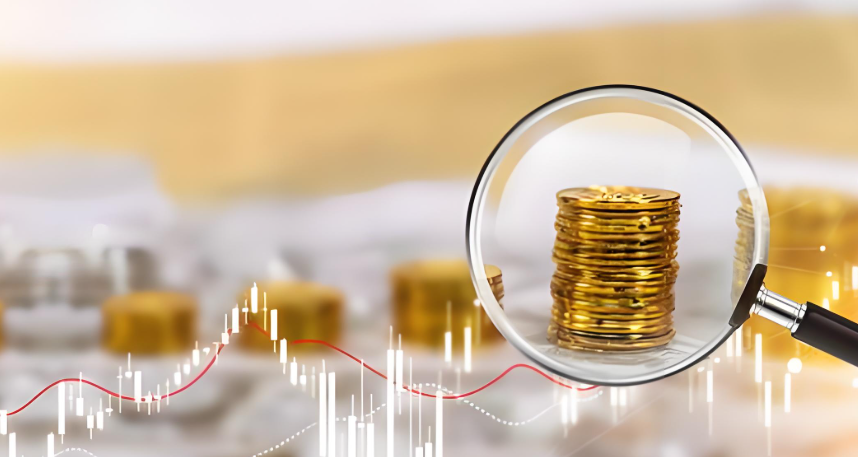Record Highs in Gold Supply and Demand
Advertisements
The global gold market has witnessed remarkable shifts as it enters 2024, marked by a noteworthy increase in total demand. Recent data highlights a year-on-year growth of 1% in the fourth quarter of 2024, setting the benchmark for quarterly demand at an impressive 4,974 tons, which also represents an all-time high for annual demand. This increase is attributed to various factors, including changing tariffs and an environment of rising inflation, which has intensified market apprehension and led to a preference for gold as a safe-haven asset. The volatility observed in both US stock indices and treasury yields has further cemented gold’s status in investor portfolios. Amidst geopolitical tension and concerns over economic stagnation, the demand for gold has steadily controlled market sentiments.
One of the critical factors influencing the current market status is the US tax and tariff policies, which have become increasingly tumultuous. For instance, in early February 2024, the US administration announced a significant increase in tariffs on all imported steel and aluminum by 25%, with no exceptions. Following on from previous measures that targeted imports from Canada and Mexico, these policies have created a shadow of uncertainty over the US economic landscape. The consequence of these trade barriers is an escalation in the risks associated with inflation, fueling heightened interest in gold as a protective asset.
Delving into the supply side, the total supply of gold in 2024 saw a notable rise to 4,974 tons, the highest in nearly three decades. A breakdown of this figure reveals that gold mines contributed 3,661 tons to overall production, marking a modest increase of 0.46%. Notably, the recovery of gold reached 1,370 tons, reflecting a significant uptick in recycling activities—up by nearly 11%. Early estimates indicate that this level of mine production is unprecedented in history, showcasing the resilience and adaptability of the gold supply chain.
On the demand front, the jewelry sector did see fluctuations due to the soaring prices of gold. Despite the overall gold demand reaching a historic peak in 2024, the jewelry manufacturing segment experienced a decline in demand by 8.53% year-on-year, resulting in 2,004 tons. This drop can be substantially attributed to weakened consumer purchasing power amid rising gold prices. Interestingly, the value of jewelry demand has soared to a staggering $144 billion, reflecting an increase of 9%. Such discrepancies between volume and value underline the unique behavior of consumers that prioritize investment over ornamental use when gold prices escalate dramatically.

Contrasting the jewelry segment, investment demand for gold experienced a remarkable surge, fueled by a year-on-year growth rate of 25%. This figure is notably the best seen in four years, largely steered by macroeconomic factors such as interest rate cuts and geopolitical uncertainties. The popularity of gold ETFs contributed significantly, drawing considerable investments as the market witnessed phenomenal interest in gold bars and coins, which remained stable at 1,186 tons and saw the investment value skyrocket by 23%, reaching an unprecedented $91 billion.
Moreover, central banks globally maintained their bullish stance on gold purchases, signifying a historical trend. In 2024, central banks collectively bought 1,045 tons of gold, continuing a streak of three consecutive years with purchases exceeding 1,000 tons. Following an extra 333 tons acquired in the last quarter of the year, this indicates an ardent commitment to gold as a strategic reserve asset. This behavior illustrates an ongoing trend towards diversifying reserves in light of the fluctuating dollar value and hints at a broader strategy toward de-dollarization.
When examining industry-specific gold demand, the technology sector showed resilience as well. In the fourth quarter of 2024, the demand for gold in technological applications reached 84 tons, culminating in a yearly total of 326 tons, which reflects a growth of 7%. This uptick can be credited to the boom in electronic device production, which rebounded from the sluggish growth seen in 2023, notably propelled by the advancements in artificial intelligence and consumer electronics. Forecasts suggest sustained growth in smartphone shipments and a similar uplift in personal computer production, reinforcing the technological industry's dependence on gold.
As we look ahead, investment strategies may need to consider the implications of the prevailing tariff policies. The US government's actions, especially those concerning new tariffs on foreign imports, particularly metals, serve to heighten market uncertainty and potential volatility. The recently implemented tariffs illustrate a palpable threat to trade relations and economic forecasts, prompting investors to seek refuge in gold further.
This backdrop of economic uncertainty, coupled with persistent inflationary pressures, underscores the resilience in gold prices, which seem buoyed against potential downturns. Data released in early February 2024 illustrated a year-on-year Consumer Price Index (CPI) growth of 3%—the largest rise since June of the same year—emphasizing a crucial point that might encourage more investors to flock towards gold, seeking safe haven amid inflationary fears.
In the context of the London gold market, recent shortages of gold bars further amplify the situation. In turn, fears of new tariffs on precious metals have driven gold prices upwards, exceeding prices seen in London’s spot market. A significant flow of approximately 393 tons of gold has been transferred to the COMEX exchange, enhancing its inventory levels by nearly 75%. Such movements not only reflect the urgency of acquiring gold amidst a tightening supply but also reveal a potential retreat from dollar dependence, encouraging long-term increases in gold prices.
In summary, the interplay of fluctuating tariffs, increasing inflation, and the dynamics of supply and demand continue to shape the gold market landscape as we advance into 2024. Unlike any previous year, gold is positioned not merely as a commodity but as a strategic asset, crucial for navigating the uncertainties of global economics. As central banks reinforce their commitment to gold, coupled with improved investment metrics, there is an undeniable indication of an enduring bullish trend in the gold sector, one which might well dominate the economic narrative in the coming years.